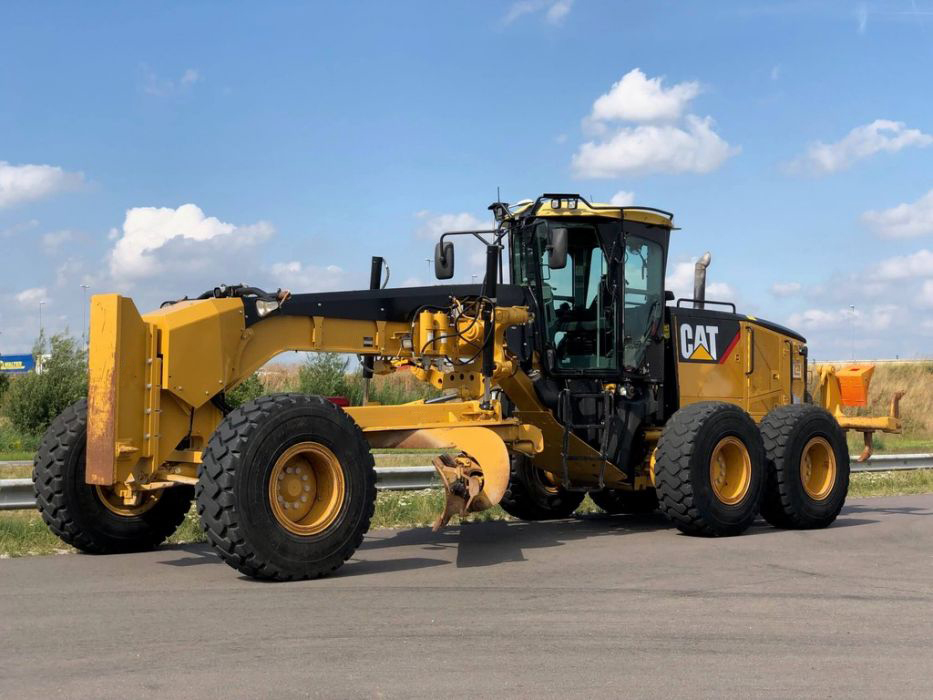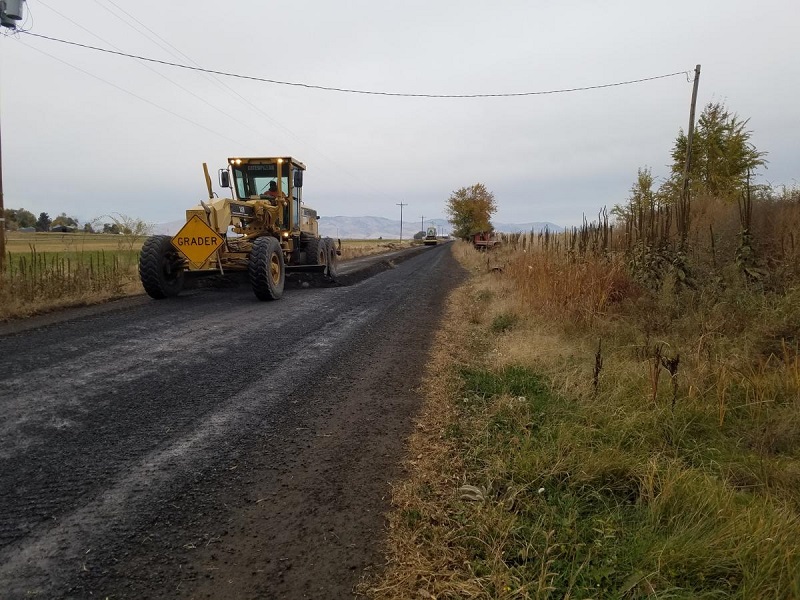Simply being in possession of a motor grader is not enough.Knowing how to operate it properly in accordance with the job at hand is just as important. When you are using a motor grader on a gravel road, there are a few basics that you should be aware of.
The Basics of Gravel Road Grading
Whenever you are grading, there are certain factors and guidelines to keep in mind. However, grading on a gravel road is a little more complicated and requires some specific guidelines to get the job done properly. Following these basic guidelines while grading gravel roads will assist you in maintaining the road’s quality and preventing any kind of damage to the pavement. These guidelines pertain to the angle of the moldboard, the moldboard pitch, as well as the speed at which the motor grader should be operated.
1) The Angle of the Moldboard
It is extremely important that the angle of the moldboard is such that the loose aggregate does not spill. The optimal horizontal angle for the moldboard while grading a gravel road is somewhere between 30 and 45 degrees. This will provide you the most leverage over the loose aggregate and prevents it from spilling along the moldboard’s leading edge.
2) Pace of the Operation
Maintaining the pace at which you operate your equipment is essential for getting a job done safely and efficiently. When grading, the motor grader should be held at a slow and stable speed of no more than 5-8 KPH. Exceeding the speed limit can induce loping or bouncing, resulting in the blade cutting depressions and ridges in the roadway.
3) Crowned Structure
Drainage systems play an undeniably important part in the maintenance of the road, and a crowned structure is needed for drainage. If it is too high, however, it can result in hazardous driving conditions.The people driving can drift toward the shoulder if the slope is too steep. Therefore, being mindful of the height of the slope at all times is necessary, and on the cross slope, a 1.27 centimeter of crown every 30 cm should be maintained.
4) Pitch of the Moldboard
The pitch of the moldboard refers to the angle at which the blade edge makes contact with the ground. The graded material will not travel alongside the blade to the discharge if the end of the pitch is too far removed. If you lean forward too much, the blade will not scrape the ground surface enough.Stay alert about the angle of the pitch and do not let it lean forward or backwards too much.
5) Shoulder
As we established already, drainage ditches are essential for roads. In order to help drain into the ditches, the shoulders must be sloped away from the peaked surface of the lane. The region should be slightly slanted but not so much that a vehicle is not able to travel on it in a case of emergencies, and it must be easy to get back control if the vehicle drifts. The sole purpose of theslanted sides is to help the drainage system.
6) Potholes
Potholes are a menace on any kind of road, so getting rid of them is essential, and in order to do that, the roads should be graded until the depth is the same as that of the potholes. Avoid filling the potholes with loose aggregate. That is a very bad idea as they would not last with heavy traffic, and the potholes will most likely form again very quickly.
7) The Ditches
Maintaining the ditches is necessary to guarantee proper drainage. The trenches on both sides of the road must be kept free from dirt. Keep in mind when digging these ditches that they should have a minimum depth and width of 30 cm. Also, larger ditches would be needed in areas where there is a lot of water flow.

MY Equipment
Motor graders are a necessity for gravel road maintenance, but buying new motor graders can be quite costly and not everyone can afford it. At MY Equipment, you can find used motor graders which will allow you to utilize the benefits they provide without paying as much as you would have for a new one. You can find Caterpillar motor grader models 140G, 140H, 140M, 12G, 12H, 12M, 14G, 14H, 14M, 120G, 120H, and 120M, among others, in our inventory.


 1400 Broadfield Blvd, Houston, TX 77084,
USA.
1400 Broadfield Blvd, Houston, TX 77084,
USA.